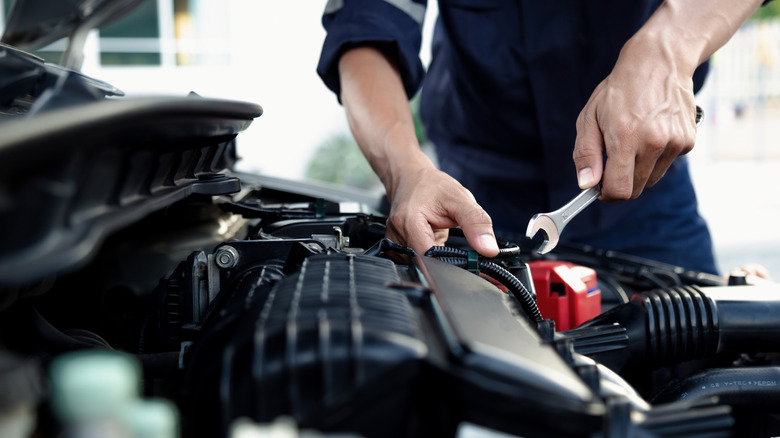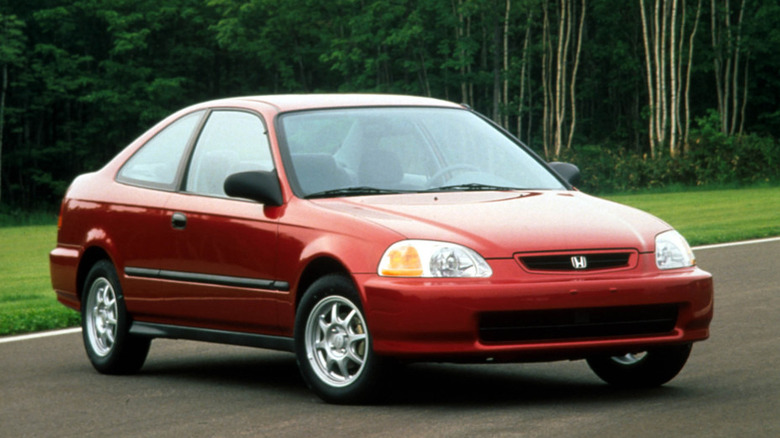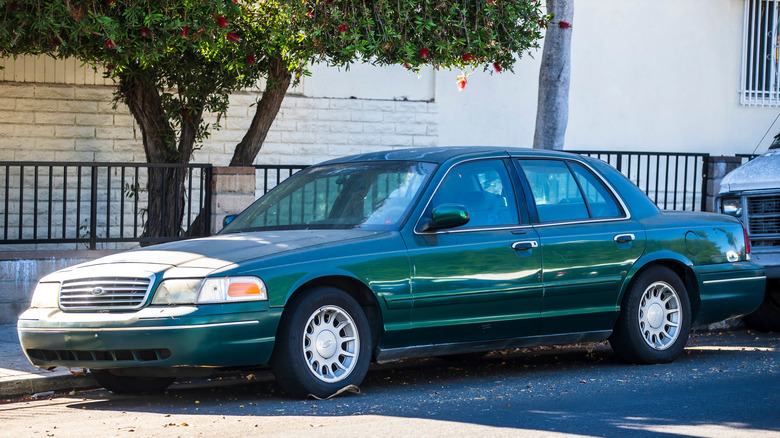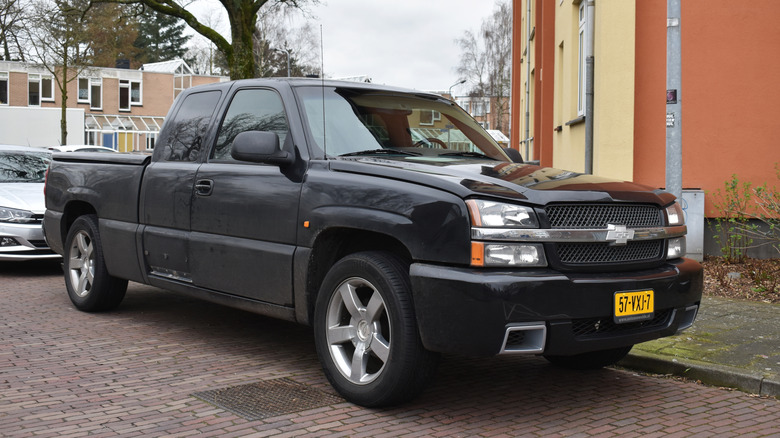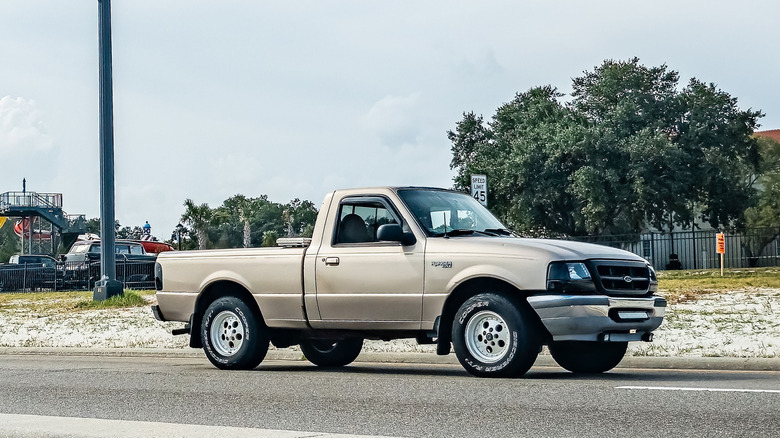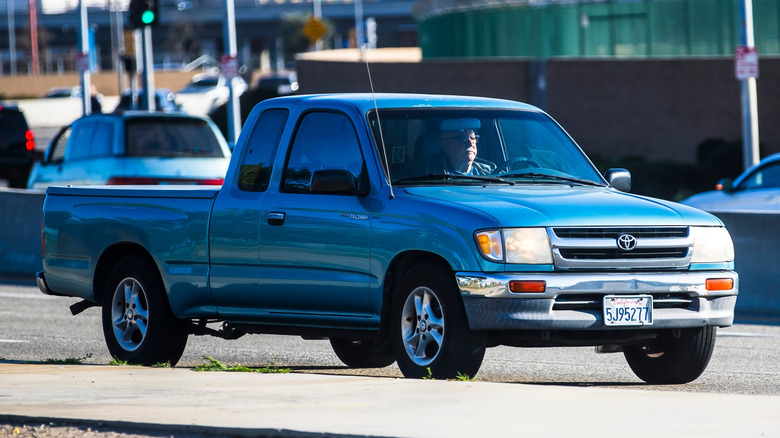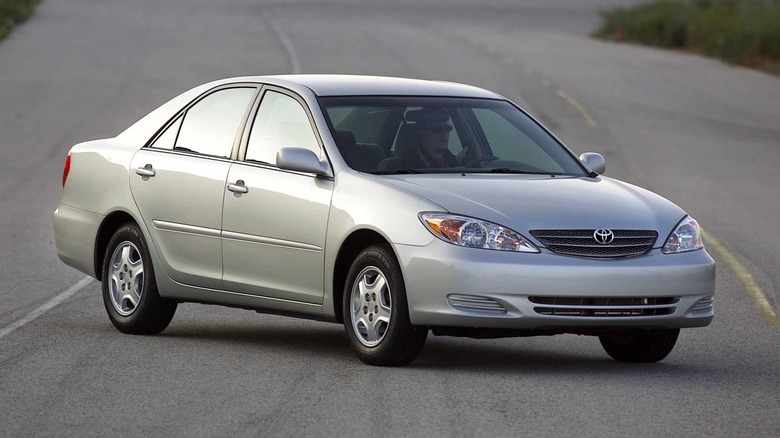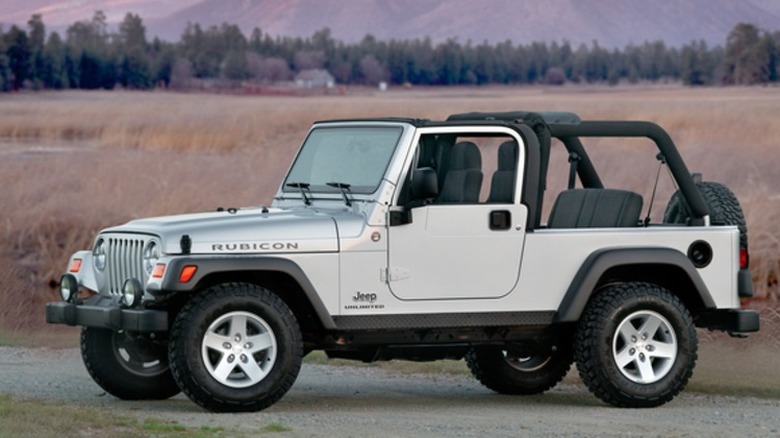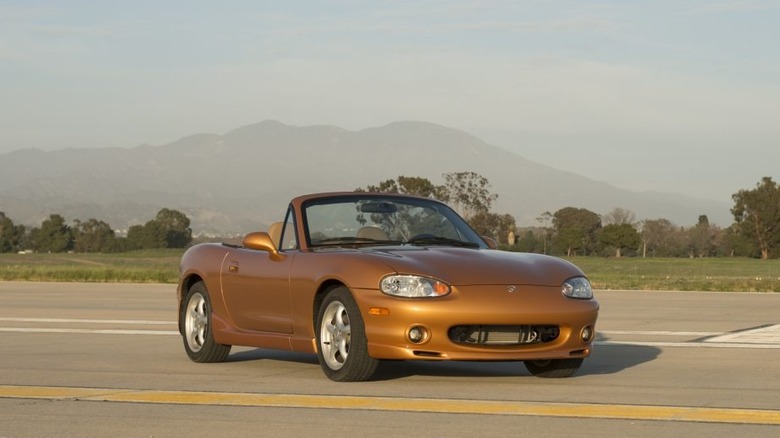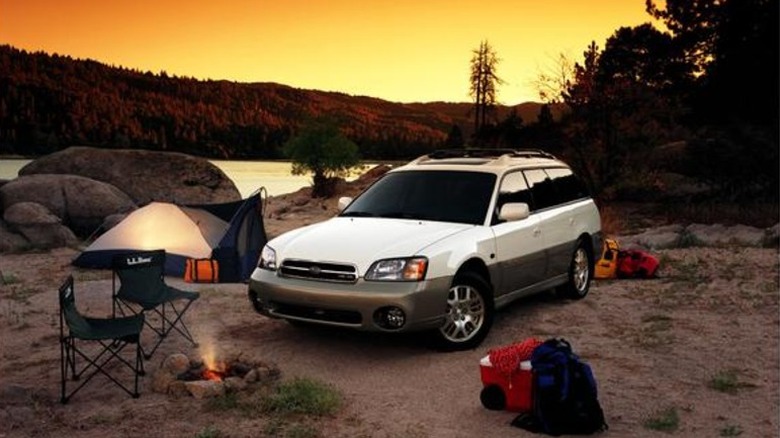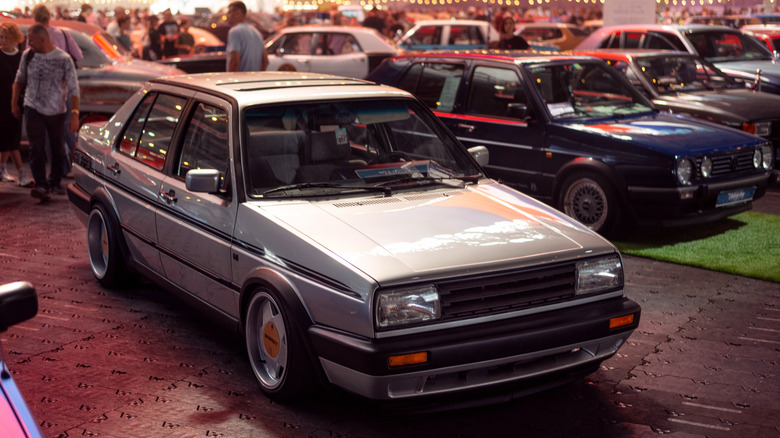13 Cars That Are Ridiculously Easy To Maintain
Do you dream of turning wrenches but are worried that you'd be in over your head? It's understandable. The world of DIY car repair can seem like an exclusive club where everyone else speaks a secret language of OBD-II codes, leaving you on the outside with a borrowed socket set and a feeling of dread.
But here's a little secret: The right car can be your all-access pass. Forget those nightmares of stripped bolts, mystery leaks, and bent valves. Certain cars are so simple and forgiving, they practically invite you to pop the hood and learn a thing or two.
So, which cars make the cut? Here's a lineup of gloriously simple machines, backed by the writer's 15 years of digging into car research, swapping stories at the track, and plenty of hands-on garage time. Think of this as your cheat sheet for finding cars ready to turn even the most nervous newbie into a confident gearhead.
1992 to 2000 Honda Civic
The 1992 to 2000 Honda Civic is famously reliable and nearly impossible to screw up, but not all trims are beginner gold. If you're just getting started, look for models with the basic non-VTEC D15 or D16 engine. These SOHC setups are dead simple, with no variable cam timing or solenoids to diagnose when things go wrong.
Skip anything with VTEC for now, like the Si, EX, and any B-series swaps. Those cars are more complex under the hood and, more importantly, way more likely to have been heavily modified. And not always well. Think janky intakes, backyard tunes, and turbo kits held together with zip ties. It's a headache you don't need yet.
Speaking of diagnostics, you probably won't need any dealer-only scanners or other special tools. A decent basic tool set and a Harbor Freight scanner will handle most jobs you'll encounter as a beginner. Pre-1995 OBDI cars are so simple that you can read error codes by counting flashing lights.
And once you're comfortable doing basic repairs, the aftermarket support is endless. Whether you're chasing daily reliability or starting down the modding rabbit hole, you've got options. Plus, clean, unmolested models hold their value, especially the EJ1 coupes from "The Fast & The Furious". So, you can consider every repair an investment in your skills and your car's future worth.
1992 to 2011 Ford Crown Victoria
Meet the last of the dinosaurs (meant in the most loving way possible). The Crown Vic — along with its Panther Platform siblings — is a glorious, body-on-frame, V8-powered land yacht built with the simple, rugged soul of a pickup truck.
Pop the hood on that 4.6L modular V8 and you'll find ... acres of space. This famously reliable engine just lounges in there, not a plastic shroud in sight to hide its secrets. You can literally see and touch almost every component. It's the perfect, no-stress classroom for learning your way around an engine bay.
For the utmost in reliability, you should probably go for a civilian model or a Grand Marquis once quietly piloted by a grandpa. But if you're feeling brave, you could opt for the P71 Police Interceptor. Just keep in mind, it likely spent its previous life chasing bad guys.
Either way, expect a few quirks. The nylon resin intake manifold on pre-2002 models is famous for cracking, but swapping it for an aluminum one is a rite of passage. And when the blend door actuator for the HVAC starts clicking like an angry cricket, you'll find a thousand YouTube tutorials to guide you through the cheap fix. Conquer these issues, and you've officially earned your wrench.
1999 to 2007 Chevrolet Silverado
There's a reason these trucks are still everywhere, and spoiler alert: It isn't their looks. The GMT800 Silverado is a mechanically simple workhorse that just doesn't know how to quit. Powering this truck, you'll find the LS-based Vortec V8s, engines so tough that some examples rack up 300,000 miles with nothing more than basic care. Better yet, the engine bay is so wide open you don't need tiny hands or bendy wrenches to reach anything.
Unless you plan on crawling through mud pits, stick with a 2WD model. It keeps things simple and spares you from learning about transfer cases and front differentials before you're ready. But before you fall in love, check the wheel wells, rocker panels, and cab corners for rust. It's this truck's only real kryptonite. Be prepared to walk away if it's got that Swiss cheese aesthetic.
Other common problems? They're more like practice runs than deal breakers. A flaky instrument cluster usually means worn stepper motors, which is a cheap and oddly satisfying soldering fix. And when the fuel pump finally taps out, most owners unbolt the bed and slide it back instead of fighting with the tank. Sounds a bit wild, but it's faster, cleaner, and the internet is full of walkthroughs to guide you.
1998 to 2011 Ford Ranger
Ford built the Ranger for what feels like forever, and that's good news for DIYers. The design is proven, the parts supply is endless, and the fixes are as straightforward as they come. The trick is picking the right engine. For maximum durability, go with the 2.3L Lima four-cylinder. Snag one in rear-wheel drive with a manual transmission, and you've got the perfect starter truck.
One of the Ranger's biggest perks is its size. It's compact enough to park anywhere and, more importantly, compact enough to wrench on without twisting yourself into a pretzel. Everything is right there in plain sight, light enough to move around, and simple to swap out. Oil changes, brake jobs, and even a clutch replacement feel way less intimidating here than on a full-size pickup.
And when you do need parts, the Ranger has a built-in cheat code. Ford made millions of them, plus the nearly identical Mazda B-Series, and they share plenty of parts with the Explorer. That means salvage yards are overflowing. Need a fender, alternator, or even a whole engine? You'll probably score whatever you need for about the price of a pizza night.
1995 to 2004 Toyota Tacoma
Ask any Toyota fan and they'll tell you the first-gen Tacoma is the stuff of legends. New trucks might be rolling supercomputers, but this one is about as analog as a cassette tape. As for its engines, the 2.4L and 2.7L fours are workhorses built to last forever, while the 3.4L V6 brings a little extra muscle without the migraines. And since this was pre-CAN bus madness, the electronics are blissfully simple. Later models give you basic OBD-II, and that's all you really need to track down issues.
But the real secret sauce? The cult following. This truck's fanbase is more supportive than your hype squad on race day. Thinking about your first oil change? There's a step-by-step video. Dreaming of a lift kit? Just post in a Facebook group, and you'll get advice, photos of other builds, and probably three people offering to come help. The only catch? Frame rail rust. It got bad enough that Toyota stepped in with extended warranty coverage, basically admitting, "Yeah, this one's on us." Spot a Taco with a clean frame, though, and you've got yourself one of the most durable, beginner-friendly trucks ever built.
1997 to 2006 Toyota Camry
The 1997 to 2006 Toyota Camry isn't here to win style points. It's here to get the job done, and it's fantastic at it. For a new mechanic, that's precisely what you need: no drama, just straightforward reliability.
In the engine bay live some of Toyota's all-star engines. The 2.2L and 2.4L four-cylinders are simple, tough, and give you plenty of room to remove and replace parts. Even the V6 is surprisingly manageable, if you're up to the challenge of working in a tighter space.
And talk about easy to shop for. Whether you need a new alternator, control arms, or even a fender, you'll find parts everywhere, often for less than you'd spend on a nice dinner. Junkyards are packed with these cars, and stores like AutoZone have anything you could possibly need, usually same-day.
Of course, no car is perfect, but even the Camry's quirks are well-documented and easy to manage. Early 2.2L engines could have oil sludge issues if neglected, but regular oil changes solve that. And as for the famous Camry dent on the corner of the bumper? Just think of it as your first, low-stakes lesson in bodywork.
1987 to 2006 Jeep Wrangler
The 1987 to 2006 Jeep Wrangler is basically Lego for adults. Doors, top, fenders — if you can turn a ratchet, you can take it apart and put it back together again. For a beginner wrencher, that's a dream setup. Solid axles, straightforward leaf or coil springs, and just enough electronics to keep it running mean you'll never get lost chasing gremlins.
Under the hood, you've got a few engine options, but the 4.0L inline-six is the holy grail. It's torquey, nearly indestructible, and will happily keep running even if you forget what an oil change is. The smaller four-cylinders are fine, too. They're slower, but still simple and easy to keep alive.
Wranglers also shine because of the aftermarket. Want bigger tires? Done. A new soft top? Easy. Winch, lift kit, rock sliders? There are catalogs, forums, and YouTube channels dedicated to nothing but helping you bolt cool stuff onto your Jeep.
Quirks? No doubt. The steering can feel vague enough to make you wonder if you're driving a boat, and rust likes to nibble on the frames and floor pans. But the fixes are straightforward, and the Jeep community has seen it all before. So, you're never alone in figuring out what to do.
1990 to 2005 Mazda MX-5 Miata
Bored? Miata. Need a smile? Miata. Want to learn how to wrench? Miata. Is the Miata the answer? Always. To everything. This little roadster is small, scrappy, and simple enough that even rookie mechanics feel like pros. Open the hood and it's refreshingly uncluttered, with spark plugs, belts, and hoses all right there. Even a clutch swap feels more like a weekend project than a life sentence.
The early 1.6L and later 1.8L four-cylinders are rev-happy little engines, and the lightweight, rear-wheel-drive setup means you'll learn the basics of a real sports car without the headaches. Parts are cheap and everywhere, which makes mistakes less scary. Break something, grab a replacement, and you're back in business. Need proof? Walk into any auto parts store and mention "Miata" and watch the clerk's eyes light up like it's Christmas morning.
The Miata community is another bonus. DIY repair guides for every squeak and leak have already been posted online, usually with pictures, torque specs, and multiple opinions on which aftermarket parts to buy. Whether you're diagnosing common Miata issues or squeezing out every last tenth on track, you'll always have support from people who are just as obsessed with these little cars as you're about to become.
1994 to 2004 Ford Mustang
Are you craving V8 vibes without the vintage headaches? Meet your new best friend: the 1994 to 2004 Mustang. This pony car is basically American muscle with training wheels, and your journey starts with two low-key engine options. The 3.8L V6 is your no-fuss, pushrod-powered entry into Mustang life. But let's be real, you want the 4.6L V8. It's smooth, torquey, and sounds like America. Pro tip: Aim for a 1999 to 2004 "New Edge" model with the Performance Improved (PI) heads. More power, same simplicity. Win-win.
And here's the best part: The SN95 Mustangs are cheaper than your last online shopping spree, leaving enough money for your first lessons in car repairs. Need a brake job? Go for it. Suspension refresh? The MacPherson strut front end is basically mechanical kindergarten. Eventually catch the horsepower bug? Engine swaps are so well-documented that it's practically a community project. Yeah, the interior might rattle, and the live axle reminds you it's from a simpler time, but that's part of the charm. This isn't a garage queen, after all. It's a blank canvas, ready to teach you everything about rear-wheel-drive fun.
2000 to 2009 Subaru Outback
Alright, let's address the boxer-shaped elephant in the room right up front: Head gaskets are a major flaw in the non-turbo 2.5L 2000 to 2009 Outback. But once you accept that reality, this wagon becomes a fantastic starter car for new mechanics.
The secret is the flat boxer engine. It looks unusual, sure, but it makes a lot of jobs easier. Take the spark plugs, for example. They sit right on the sides of the engine, completely accessible instead of buried against the firewall. Oil changes are straightforward, and most parts are exactly where you'd expect them to be.
But back to those head gaskets. On these naturally-aspirated EJ25 engines, they are a guaranteed failure point. The good news? This is one of the most well-documented repairs ever. There are YouTube tutorials, forum threads, and probably a neighborhood Subaru guru who's done it six times. Think of it less like a catastrophic failure and more like a coming-of-age ceremony.
The smart play is to find an Outback that's had the job done with quality multi-layer steel gaskets (and receipts to prove it). Or maybe, if you're feeling brave, take the project on yourself and instantly earn your stripes in the Subaru club. Either way, once you've made peace with the gasket issue, you get a capable all-wheel-drive wagon that is otherwise dead simple to maintain.
2004 to 2009 Toyota Prius
Hold on, a Prius? On a list of easy-to-fix cars? Absolutely. Forget everything you think you know about complicated hybrids, because the second-gen Prius is the secret weapon of low-stress car ownership and a surprisingly great car for a beginner.
Here's the trick: The 2004 to 2009 Prius is easy to maintain because the hybrid system cleverly eliminates most of the parts that usually break. There's no alternator, starter motor, or power steering pump to fail. Your brake pads can easily last over 100,000 miles thanks to regenerative braking. The little 1.5L four-cylinder has it easy, too, since it doesn't even run all the time. That means oil changes, spark plugs, and other routine jobs are simple ... and much less frequent than you'd expect.
"But what about the giant, scary hybrid battery?" Honestly, the fear is bigger than the reality. These packs often last up to 150,000 miles, and when they do get tired, you're not doomed to a dealer bill the size of a mortgage payment. A whole aftermarket exists for refurbished packs, often with warranties, at a fraction of the cost. Some mechanics will even deliver and install one right in your driveway.
2001 to 2010 Hyundai Elantra
Think Civics are the only starter cars worth chasing? Think again. The 2001 to 2010 Hyundai Elantra is the underdog nobody's fighting over, and that's the beauty of it. Cheap, reliable, and dead simple, it's the perfect classroom if you're willing to roll up your sleeves.
Under the hood sits the trusty 2.0L four-cylinder, a refreshingly basic little engine that feels like it was designed by someone who actually liked mechanics. Everything's easy to find and identify, and there's enough space to swing a wrench without donating your knuckles to the project. Air filter? Easy. Spark plugs? Easy. Timing belt? You guessed it — super easy.
The real magic trick is the cost of parts. They're so cheap you'll think the cashier forgot to scan half your order. A repair that might knock another car off the road for a week is just an annoying Tuesday for an Elantra owner.
If you're looking for the best Elantra years, go for a 2008 to 2010 model. By then, Hyundai had hit its stride, creating cars cheap to run and tough enough to take rookie mistakes in stride. Style points? Not a chance, but it'll happily teach you how to wrench without breaking your spirit (or your wallet).
1979 to 2004 Volkswagen Jetta
Want to dip your toes into European car ownership without the therapy bills? The Jetta is your gateway drug to German engineering, back when VW still believed mere mortals should be able to work on their own cars. The key is to ignore the complicated stuff. Your mission is to find a Mk2, Mk3, or Mk4 with one of the legendary eight-valve, four-cylinder engines: the trusty 1.8L or the famously durable 2.0L, lovingly dubbed the "two-point-slow."
For a beginner, it's best to steer clear of the VR6 and 1.8T engines for now. With the VR6, you're squeezing six cylinders into a bay designed for four, which means maintenance feels like wrenching through a mail slot. And the 1.8T brings turbo complexity. 'Nuff said. Even the 16V motors are worth skipping at first, since their CIS fuel injection is clever German engineering — and pure sorcery for anyone still learning the basics.
The humble eight-valve won't win stoplight races, but it'll happily teach you timing belts and tune-ups without sending you to the parts counter crying. And the best part? You're never on your own. VW fans are some of the most obsessive DIYers out there (looking at you, VW Vortex), and they've created a guide for just about every common Volkswagen problem imaginable.
